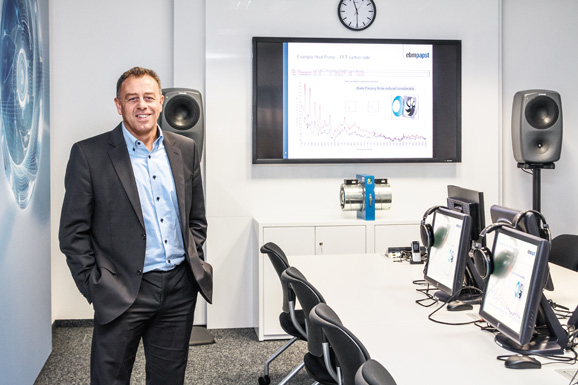At what point is fan noise perceived as disturbing?
That is not an easy question to answer. There are of course physical characteristics like the noise level that you can measure on a test bench. But numbers alone often say nothing about how the human ear perceives this kind of noise. For a subjective assessment, what is important is how “raw” the noise is perceived. This perception can happen when the signal is given a temporal structure through a change in the frequency or amplitude.
A lot of noises also have tonal components which can be extremely disturbing. This perception differs from person to person, which makes assessment even more complicated. One person reacts negatively to low-frequency noises, another winces at higher-frequency noises.
How do you measure this personal perception?
At ebm-papst, we have the “AudiMax”, a so-called psychoacoustic laboratory. In this noise-insulated facility, we have space for up to eight test listeners to whom we can play the noises of our products in different configurations.
How does this method help achieve usable results?
After hearing the noises, our staff ask the test subjects about how they perceived them and thus create a database with scientific considerations. Using this database, we can evaluate together with our colleagues from production which measures need to be taken and which not. Our overall aim is to create a fan that is perceived as comfortable by as wide a spectrum of test subjects as possible.

Leave a comment